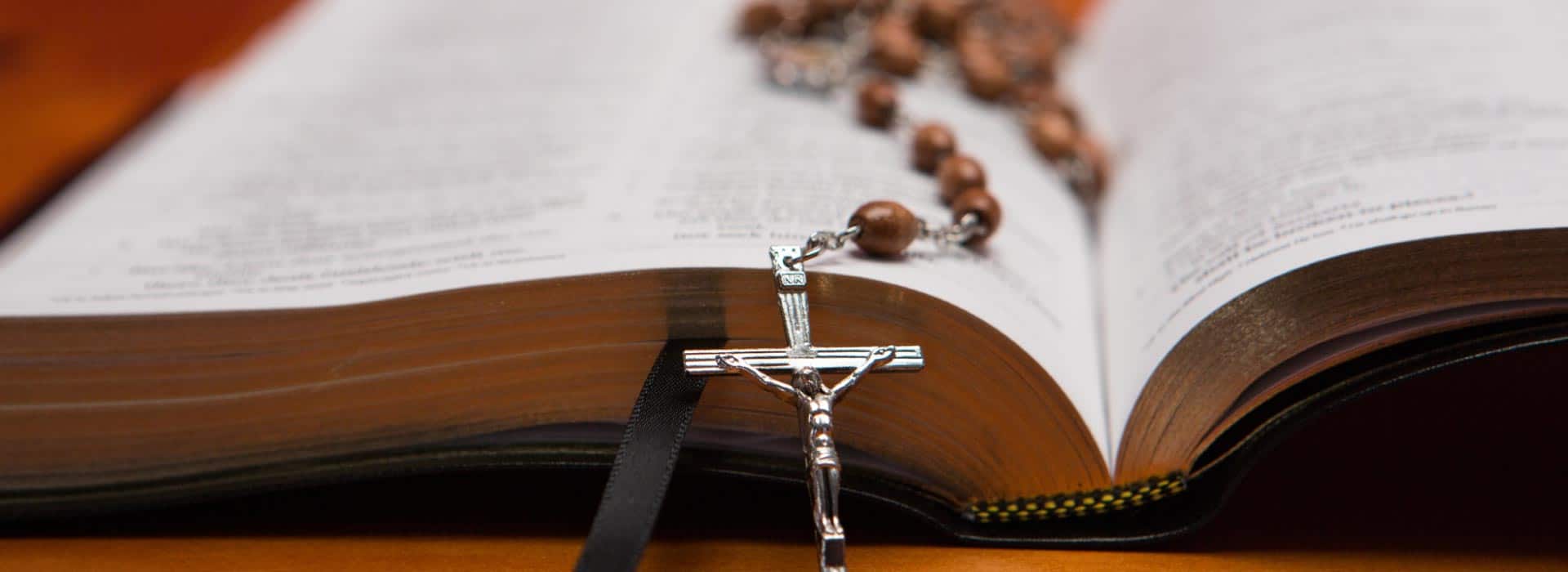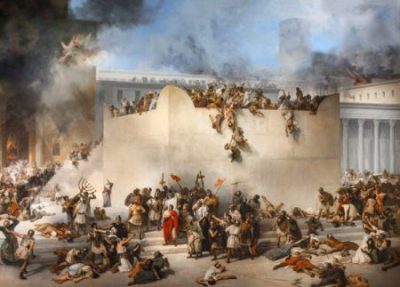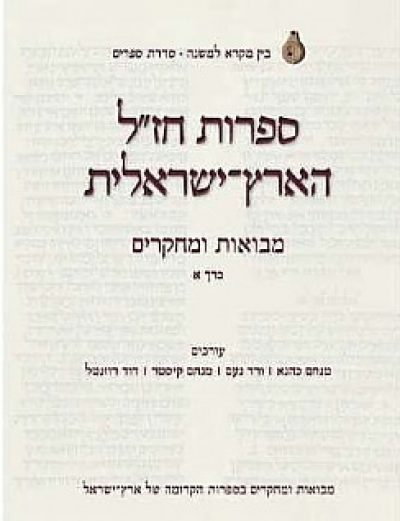Rosh HaShanah

Rosh Hashanah literally means “the head of the Year.” However, the association of this name, with the festival celebrated at the beginning of the Hebrew month of Tishrei only dates from Talmudic times. In the Torah, the festival is called both Yom Teruah, “the day of blowing the Shofar,” and Yom HaZikkaron, “the day of remembrance.”
The association of this time of the year with a time of renewal probably goes back toExodus 23:16, when Sukkot, the autumn harvest festival, is identified with “the end of the year,” the intention most likely being the completion of the agricultural cycle. But the creative spirit of the Talmudic Rabbis infused Rosh Hashanah as the New Year with a much deeper meaning—the Day of Judgement, in a process called Teshuvah. That word literally means “response” or “return”, but carries with it a number of other associations, including repentance, renewal and, as some 20th century rabbis and scholars have put it, a kind of re-creation of the Self, in dialogue with God.
There are two Rabbinic traditions as to what actually happened on the first of Tishrei. One says that on that day, God began to create heaven and earth. Part of the liturgyreflects that tradition. But the other ascribes Creation to the 25th of the previous month,Elul. According to this approach, six days later, the first of Tishrei, would mark the creation of Adam, the first human being. That approach puts the life of one human being as equivalent to the whole world and also underscores the universal nature of Rosh Hashanah. The traditional belief holds that all are judged on this day, not just theJewish people.
But for many Jews, Rosh Hashanah is not so much a theological occasion as it is social and familial. Dressed in new clothes, families gather on the first night for a festive meal that includes many sweets, such as apples dipped in honey, expressing the wish for a good and sweet New Year. Many Jews who are not generally synagogue-goers do try to attend at least on Rosh Hashanah and Yom Kippur, known as the High Holy Days, or the Days of Awe (Yamim Nora’im in Hebrew.) The highlight of the synagogue service on the mornings of Rosh Hashanah would be the blowing of the ram’s horn. Traditionally, this has a number of symbolic meanings: one is to mark the annual coronation of the Divine King; another is a kind of “wake-up call” for the congregation to repent.
One of the important liturgical themes of this day is Akedat Yitzchak, the Binding ofIsaac, described in Genesis 22, one of the mandated readings for the festival service. At the last minute (verse 13,) a ram was substituted for the human sacrifice. That is the origin of the ram’s horn as a symbol for Rosh Hashanah, the day on which the Binding was supposed to have taken place. Since another reading for the festival is Genesis 21, which describes the expulsion of Hagar and Ishmael, some contemporary scholars have suggested that one of the major themes for Jewish cheshbon nefesh—introspection, soul-searching, stock-taking—should be with regard to the relationship between the children of Isaac and the children of Ishmael. Insh’allah!
The appropriate greeting is Shana Tova—wishing a good year.
Sources for further Bible study: Nehemiah 8
Yom Kippur
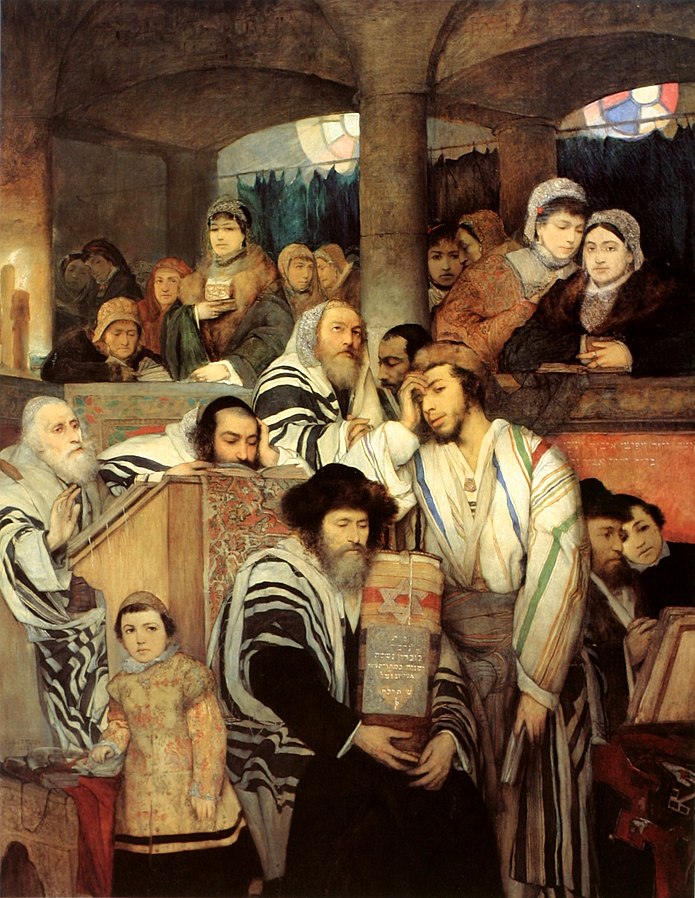
The first ten days of Tishrei, starting with Rosh Hashanah and culminating with Yom Kippur, are known as Aseret Y’mei Teshuva, the ten days of Teshuva. The third day, the day after Rosh Hashanah, is known as Tzom Gedalyah, “the fast of Gedalyah.” Gedalyah was governor of Judah, appointed by the Babylonians after they destroyed the First Temple in 586 BCE. He was assassinated by one of his own people (II Kings 25: 23-25.) Traditionally, the fast commemorated this ancient event, marking the end ofJewish self-rule until the return from Babylonian captivity. Recently, some Israeli Jews have associated the fast with the assassination of Prime Minister Yitzchak Rabin by a Jewish extremist and have suggested that it might be an appropriate time for a national process of Teshuva to take place.
If the first two days of Tishrei—Rosh Hashanah–were days of judgement, emphasizingGod’s attribute of justice, the tenth day, the Day of Atonement, emphasizes God’s mercy. It is considered to be the most sacred day of the Jewish year. In Israel, this is a day when just about everything shuts down. Even secular Israeli Jews generally refrain from driving on this day and the government-related radio and TV stations do not broadcast for about 30 hours. Since 1973, Yom Kippur has an additional meaning: a memorial for the soldiers who fell in that traumatic war.
The 25-hour fast actually begins with a feast on the eve of the festival, held in the afternoon and known as the Seudah Mafseket. When the fast begins, all of the prohibitions that would normally apply on a Sabbath apply to Yom Kippur, with 5 additional prohibitions: no eating or drinking, bathing, applying fragrant oils, wearing leather shoes and having sexual relations. There are at least four approaches to the meaning of these prohibitions, called in Biblical language “afflicting the soul” (Leviticus 23:27.) One approach says that by not engaging in these normal, everyday activities, we can concentrate better on our Teshuva and prayers. A second approach, based on one of the Biblical readings for the day, Isaiah 57:14-58:14, describes the fast as a day of identification with the poor and the hungry and an exploration of our responsibilities towards those less fortunate than ourselves. The mystics say that by removing ourselves from the workaday world, we become as angels. But the fourth approach, very different from that of the mystics, maintains that precisely by denying ourselves these “earthy” actions, we are most sharply confronting our humanness. In fact, Yom Kippur is seen as a day for reckoning with our own mortality. Many people have the custom on this day of dressing in simple, white garments, thought to represent the shrouds in which they will be buried. A communal confession is also receited, as if worshippers are preparing for their end.
The evening of Yom Kippur is known as Kol Nidre night, in recognition of the singing of the very famous prayer by which the festival is inaugurated. Technically, Kol Nidre isn’t even a prayer at all, but rather a legal formula absolving us of vows we have made in the previous year and been unable to keep and those we will take upon ourselves for the future. The central importance of Kol Nidre (literally, “all the vows”) seems to lie less in the actual words and much more in the haunting melody to which they are traditionally sung.
Many Jews, even those who throughout the year, are not that religiously observant, spend most of the day in the synagogue on Yom Kippur. On a regular weekday, there are three services—evening, morning and afternoon; on the New Moon, Sabbath and festivals, four, but on Yom Kippur, five services over the course of the evening and the next day. The morning liturgy includes a section that recalls the ritual of the High Priestin the Temple in ancient times. During the afternoon service, one of the highlights is reading the book of Jonah, which describes the process of Teshuva of the people of Nineveh, underscoring the universal nature of the concept. (This book is read by manyChristians during Lent.)
The intensity of the prayer builds up to the last moment of the day, when a final blast of the Shofar is blown and the congregation cries out, “Next year in Jerusalem.” In some communities, this is the occasion for spirited dancing, albeit on a (very) empty stomach. The congregants go home for a hearty break-the-fast meal and then begin (or, if they have already begun, continue) to erect and decorate the booth or Sukkah in which they will “dwell” for seven days in the next festival of Tishrei, Sukkot.
The greeting for Yom Kippur is a bit complicated. Although it would not be inappropriate to say Shana Tova or even Chag Sameach, there is a particular greeting especially for this day: G’mar Chattima Tova. This greeting is based on an ancient legend that says that on the High Holy Days, the Almighty sits in heaven, with three books in front of Him. The completely righteous are inscribed immediately for life, while the completely wicked are inscribed immediately for death and destruction. Most people are somewhere in between those two extremes. The book of ones fate is inscribed on Rosh Hashanah but not sealed until Yom Kippur. Ones fate will be determined by his actions during the ten-day period. If one engages in Teshuva, prayer and charity, a negative decree can be averted. So, when one says G’mar Chattima Tova, one is wishing that the person being greeted should be signed and sealed for a good life. Interestingly, even avowed atheists and certainly many people who might reject the somewhat simple theology of that legend would still use the greeting as a tradition.
Sources for further Bible study: Leviticus 16, Isaiah 57:14-58:14, Jonah
Sukkot
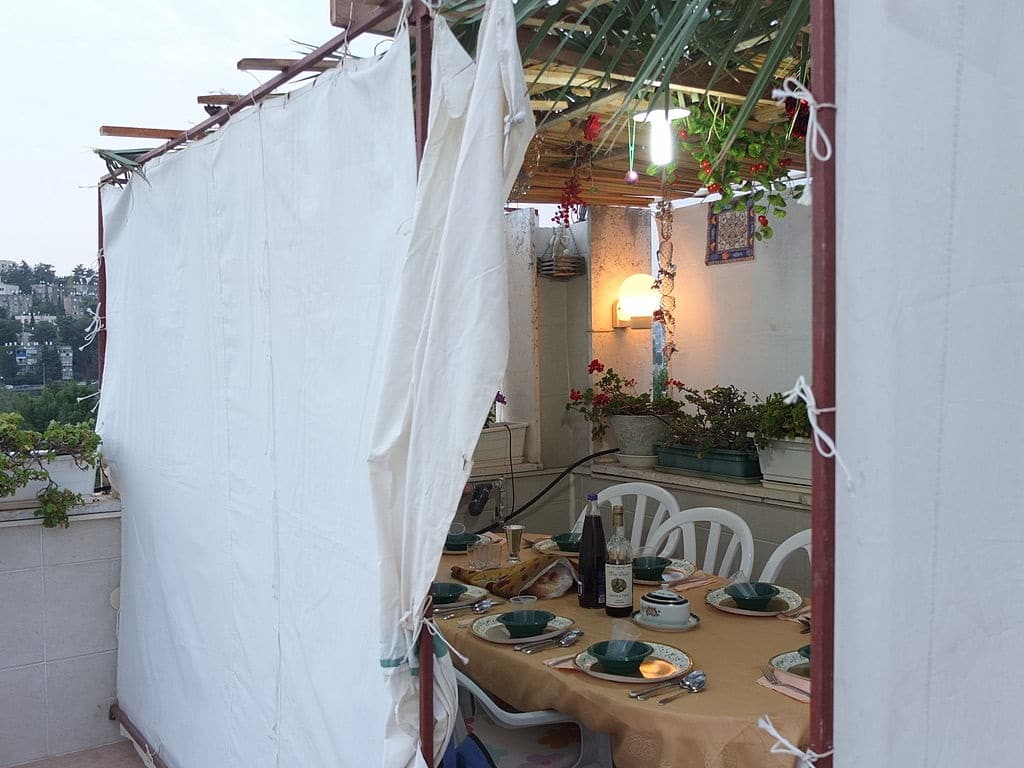
Since ancient times, Sukkot has been the most joyous of all the Jewish festivals. It begins on the 15th day of the seventh month, and the first night is generally the first full moon on or after the autumnal equinox. The first reason for joy is the autumn harvest, but upon that basis have been added more layers of meaning.
Sukkot is a time rich with symbols. Perhaps the most obvious is the Sukkah, the booth in which the ancient Hebrews were commanded to “dwell” for seven days. The Biblical text (again, Leviticus 23, verses 42-43) states that the reason for this practice is “that your generations may know that I made the children of Israel to dwell in booths, when I brought them out of the land of Egypt….” Again and again, one sees how theExodus from Egypt is the central, defining event in the history of Israel the people.
The rabbis in the Talmud debate whether what is meant is actual booths, or a symbol of the Pillars of Cloud and Fire by which the Lord guided us through our wanderings in the desert. The Sukkah thus symbolizes Divine Providence. Paradoxically, perhaps, it also symbolizes the frailty of human existence. At the harvest—precisely the time when the farmer is inclined to be most sanguine and boastful—we are commanded to leave our permanent, sturdy homes and move into temporary dwellings to keep us ever-mindful ofGod’s bounty and the gift of life. Some people actually sleep in the Sukkah; others merely have their meals there.
Sukkot is a time of much entertaining and fellowship. Probably because of the usually good weather at this time of the year, many families use the opportunity of Chol HaMoed Sukkot for travelling throughout the country. There are many festivals, marches and other events held during this week. Many Israelis make a special visit toJerusalem during this week, in an echo of the ancient pilgrimage.
The second set of symbols is the Arba Minim, “the Four Species,” delineated in Leviticus 23: 40, the palm branch and the citron, the myrtle and the willow. For each of the seven days (except Shabbat), as part of the morning prayer service, one takes these four in hand and waves them in six directions: east, south, west and north, up and down, again to indicate God’s Providence over the whole of our existence. Many explanations have been given for the symbolism of the Four Species. One of the best known is that each is compared to a different kind of person. The citron, which has both taste and fragrance, represents people who have both learning and good deeds. The palm branch has taste, but no fragrance, and is compared to a person who has learning, without deeds. The myrtle has fragrance, but no taste, like a person of deeds without learning. The willow has neither, and there are people with neither deeds nor learning. But only by taking all of them together do we create a real community. If one lives near an area in which there are many religious Jews, one will see that for the week before Sukkot, a special shuk is set up for the purchase of these items. Often, Sukkahdecorations are sold there, as well.

In synagogues, for every morning of the seven days (except Shabbat) the congregants form a processional around the synagogue, carrying their set of Four Species and singing. These processionals are named for the prayers that are chanted to accompany them—hoshanot (like the English word “hosannas.”) The actual meaning of Hoshana is “O Lord, we beseech thee to save us.” The seventh day is called Hoshana Rabba (“the Great Hosanna”.) On that day, the congregation marches around the synagogue seven times. Rabbinic lore has it that although, as we mentioned earlier, ones fate is signed and sealed on Yom Kippur, the book isn’t really put away until Hoshana Rabba, so that one has a chance to continue the process of Teshuva and atonement a bit longer.
Perhaps paradoxically, the Biblical book associated with Sukkot is Ecclesiastes. Thus, on the most joyous festival of the year, the community reads a somewhat somber and even, at times, sardonic work. That may be part of the reason for reading this book—to achieve some sense of balance. This balance is hinted at in the third chapter of Ecclesiastes which begins, “ To every thing there is a season, and a time to every purpose under heaven: a time to be born, and a time to die; …a time to weep, and a time to laugh; A time to mourn, and a time to dance; …A time to love and a time to hate; A time for war and a time for peace.” There may be a connection between this theme of balance and the fact that on Sukkot, day and night are of equal length. There may even be a connection with the Zodiac sign for the month of Tishrei, Libra, the scales. But the main connection with Libra may be God’s weighing and balancing of our good and bad deeds, in the process of Teshuva and atonement.
Sources for further Bible study: Ecclesiastes, Zechariah 14
Shemini Atzeret/Simchat Torah
In the Torah, it states, “…on the eighth day shall be a holy convocation unto you…” No special meaning is given to this day, other than a festive way of concluding the Sukkotholiday. As the Halacha (Jewish religious law) developed, in some ways Shemini Atzeret was simply the end of Sukkot, while in other ways, it was a separate festival. The synagogue service included a prayer for rain. On the seven days of Sukkot, seventy sacrificial bullocks were offered, for the welfare of the seventy nations of the world; on Shemini Atzeret, one sacrifice was offered, for the welfare of the Jewish people. (To some extent, this can be seen as another example of the theme of balance—in this case, between the universal and the particular.) But still, we may be wondering what the nature of this festival is.
A Rabbinic Midrash, in attempting to give some meaning to the celebration, relates the following story: “Once a king had a friend. The king invited the friend to the palace for several weeks of merry-making and revelry. When the end of the period was nearing, the king said to his friend, ‘Let’s have one more party tonight, to conclude this wonderful time we’ve had together.’” The story is an allegory in which the king is God, the friend is the Jewish people and the palace is the month of Tishrei, in which we are close to God and spend much time in His Presence. We have many festive opportunities to celebrate with Him. So in this sense, Shemini Atzeret has no further meaning than a way to wrap up the holiday season.
When we were celebrating it for one day only, this combination of the prayer for rain and the conclusion of the holiday season may indeed have been enough. But with theexile into Babylonia, Diaspora Jews began celebrating most of the festivals for an additional day. (This was never the case with Yom Kippur, which—thankfully—remained a one-day fast throughout the world.) The reason for this extra day is that the calendarwas determined through the sighting of the New Moon by the authorities in Jerusalem. Sanctity of time was made dependent on sanctity of place. The rabbinical court in Jerusalem would then send out messengers to the Diaspora communities to inform them of the determination of the new month. Since it sometimes took days for them to arrive at their destinations, it was decided that the local Jewish community would add an extra day to the festival because of some doubt as to when the actual time was.
In modern times, we have scientifically determined calendars, and no longer need to rely on messengers. Therefore, some of the liberal Jewish movements have dispensed with the second day in the Diaspora. The more traditional movements have retained it, partly in order to differentiate between practice in Israel and abroad.
If we think back to the community in Babylonia, they would have added a second day to Shemini Atzeret and then truly, the day would not have had much meaning. But at the same time, another process was taking place within the synagogue. Initially, the Five Books of the Torah—Genesis, Exodus, Leviticus, Numbers and Deuteronomy— were read in the synagogue in a triennial cycle (some liberal synagogues have gone back to this practice in our own day.) Then, the Rabbis declared that the entire Torahwould be read in a one-year cycle, with a particular portion being allotted each week. This became known as the Parshat Hashavua, the Portion of the Week. In the Diaspora, the second day of Shemini Atzeret became known as Simchat Torah,Rejoicing with the Torah. This was the day when in the synagogue the very last chapter of the Book of Deuteronomy would be read. But then in order to maintain the continuity of Torah, the first chapter of Genesis was read immediately thereafter. Thus, no time would elapse without Torah.
Jewish popular or folk culture then took over and made this day into a kind of three-ring circus. In the synagogue, all of the Torah scrolls are taken out of the Holy Ark and paraded around seven times, called Hakafot (“circling”)both in the evening and then again the next morning. Each of the seven times is concluded with singing and dancing, which sometimes becomes a bit wild. Simchat Torah is an occasion for drinking, humor and even friendly pranks on the part of the children, who are often given special flags and sweets. Except for Purim, this is the most frivolous day of the Jewish year.
In Israel, Shemini Atzeret and Simchat Torah are combined into one day. Now, the day has so much meaning and so many rituals and customs that in some synagogues, the morning service may last up to six or seven hours! And, in a rather strange development, a new custom has arisen, at the end of the festival, of Hakafot Shniyot,“Second Circling.” (Although, technically, this is really the third time, not the second.) These are public celebrations, not inside synagogues, featuring dancing with the Torah scrolls. Since the festival is officially over, musical instruments can be used to accompany the dancing. Often public officials and other dignitaries, as well as representatives of different communities, new immigrants, etc. participate in these festivities. They have no religious significance.
So, the spiritual journey which began in Elul, continued with the process of Teshuva(return, repentance, renewal), God’s judgement and mercy,and the joy of Sukkot, culminates in a celebration of the Jew’s unending commitment to Torah.


